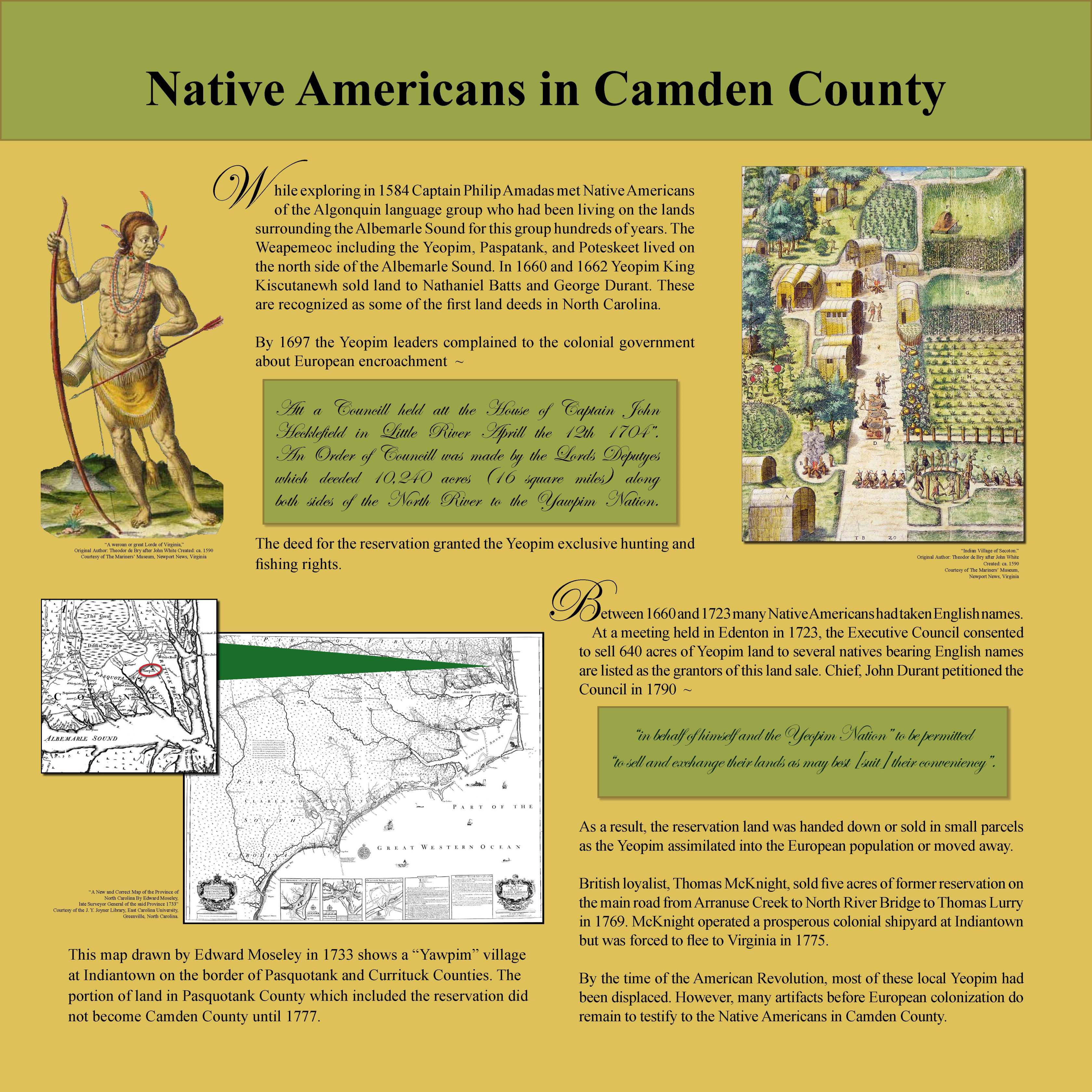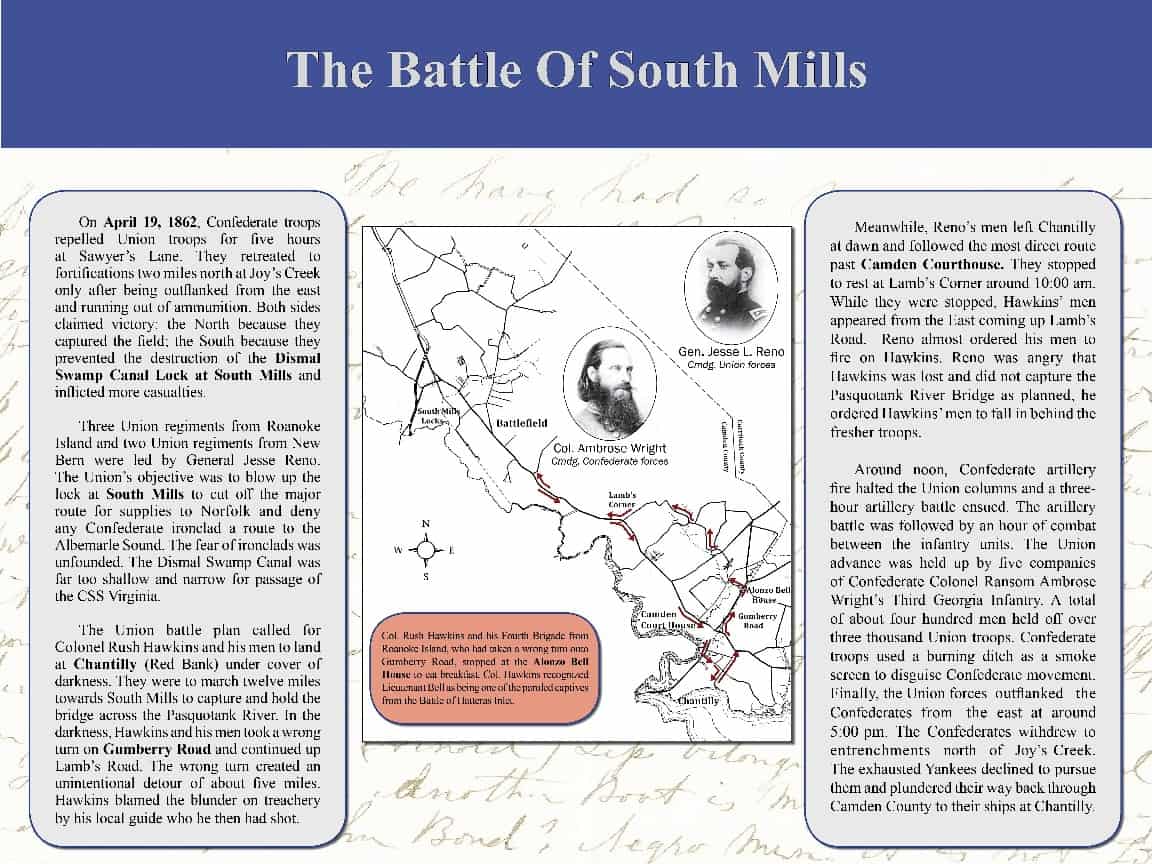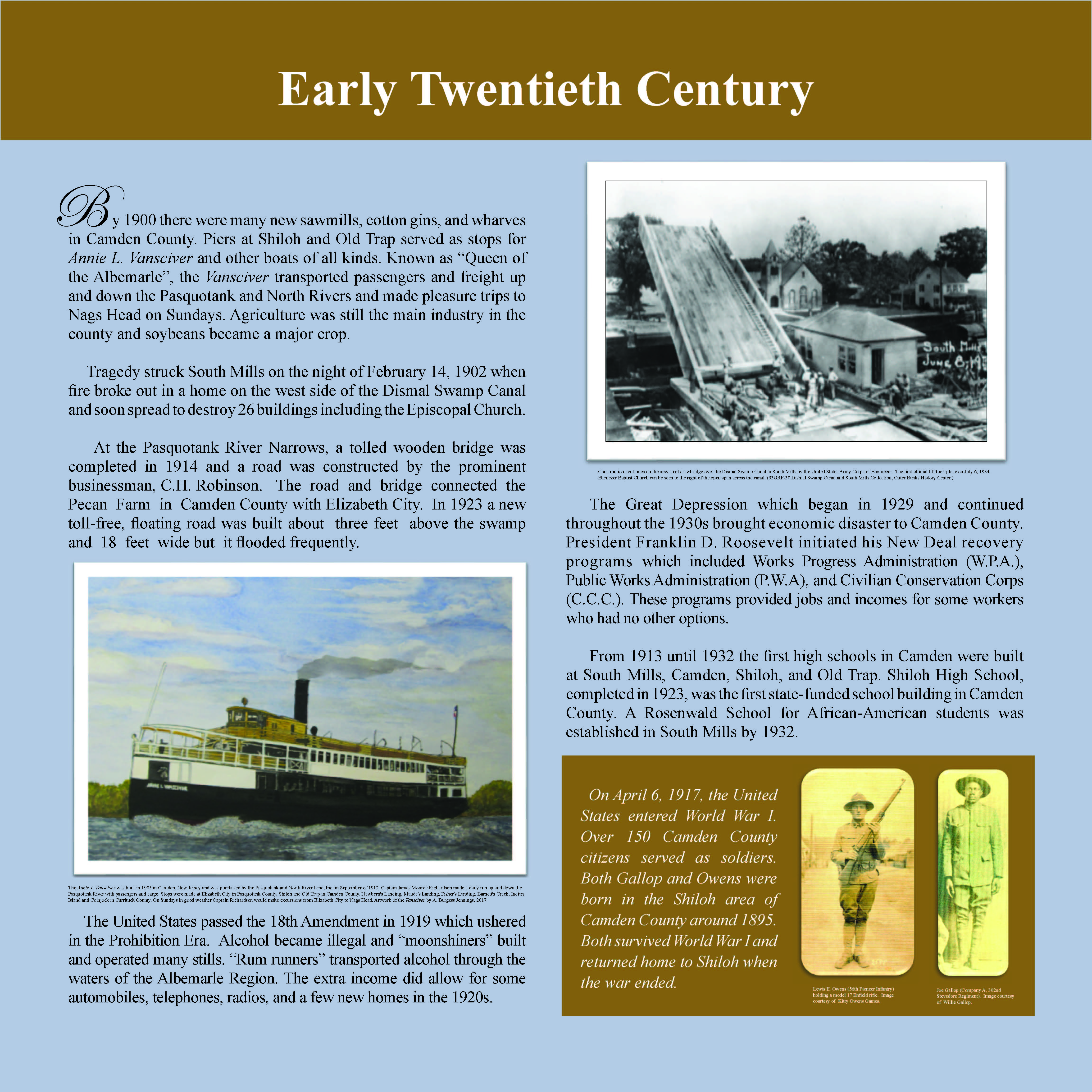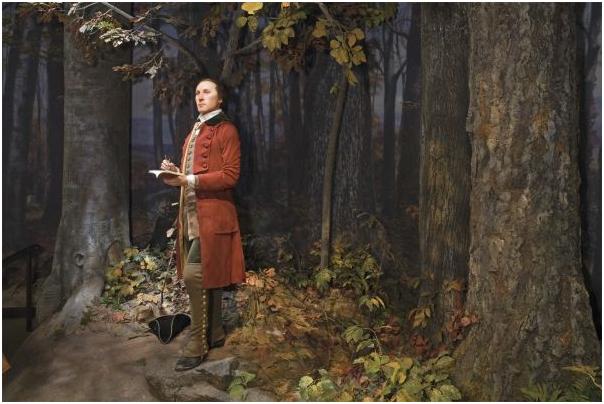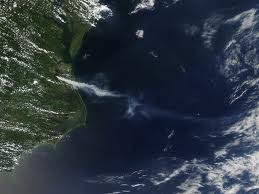History of the Dismal Swamp
The Great Dismal Swamp is a geological wonder. For millions of years before the Swamp was formed, it was under the sea. It is viewed by naturalists and other scientists as one of the best outdoor laboratories in the world! This natural treasure emerged as a landform when the Continental Shelf made its last significant shift.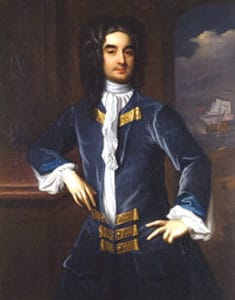
William Byrd II by Hans Hysing – Virginia Historical Society
Just who discovered the Great Dismal and when is unknown. Colonel William Byrd II was a member of the commission that surveyed the North Carolina/Virginia state line through the Swamp in 1728 and provided the first extensive description of it. Colonel Byrd first suggested draining the swamp and digging a north-south canal through it to connect the waters of Chesapeake Bay in Virginia and Albemarle Sound in North Carolina. In May 1763, George Washington made his first visit to the Swamp and joined with several other prominent Virginians and North Carolinians to form two syndicates known as the Dismal Swamp Land Company and the Adventurers for Draining the Great Dismal Swamp. This group hoped to drain the Swamp, harvest the trees, and use the land for farming.
The company purchased 40,000 acres of Swamp land for $20,000 in 1763. Washington directed the surveying and digging of the 5-mile long ditch from the western edge of the Swamp to Lake Drummond, known today as Washington Ditch. In the late 1700’s, Riddick Ditch was completed. Together these ditches provided a way to transport logs out of the Swamp and drain it as well. The Adventurers soon realized, however, that the task of draining the Swamp was enormous and gave up that part of their plan to concentrate on lumbering. They cut much of the cypress trees for use in shipbuilding and the cedars for shingles and other products.
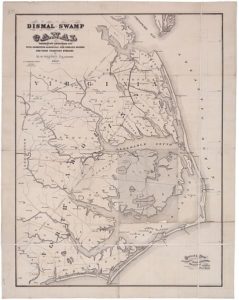 By 1796, Washington had become disappointed in the management of the Dismal Swamp lumber business and contracted to sell his 1/12th share to “Lighthorse” Harry Lee, father of Robert E. Lee, who never was able to come up with the purchase price. So Washington’s share passed on to his heirs upon his death in 1799.
By 1796, Washington had become disappointed in the management of the Dismal Swamp lumber business and contracted to sell his 1/12th share to “Lighthorse” Harry Lee, father of Robert E. Lee, who never was able to come up with the purchase price. So Washington’s share passed on to his heirs upon his death in 1799.
Map is titled “Dismal Swamp Canal connecting the Chesapeake Bay with Currituck, Albemarle and Pamlico Sounds and their tributary streams, by D. S. Walton, Civil Engineer, 1867.” Courtesy of http://www.learnnc.org
Camp Mfg. Company, a predecessor of Union Camp, acquired all the Dismal Swamp Land Company’s property in 1909. Lumbering continued in the Swamp and by the 1950’s the last 20,000 acres of virgin timber were removed. In 1973, Union Camp donated its Virginia swamp holdings to the Nature Conservancy which, in turn, deeded it to the Department of the Interior for creation of the Great Dismal Swamp National Wildlife Refuge. The Refuge consists of 107,000 acres of forested wetlands surrounding Lake Drummond, a 3,100 acre natural lake located in the heart of the swamp. William Drummond, the first Governor of North Carolina (1663-1667), discovered the oval lake which still bears his name.
Even though the average depth of the lake is only six feet, its unusually pure water is essential to the swamp’s survival. The amber-colored water is preserved by tannic acids from the bark of the juniper, gum and cypress trees, prohibiting growth of bacteria. Before the days of refrigeration, water from the Swamp was a highly prized commodity on sailing ships. It was put in kegs and would stay fresh a long time. People spoke of the magical qualities of the Swamp’s tea-colored water and how, if it were regularly drunk, it prevented illness and promoted long life.
African-American History and the Dismal Swamp
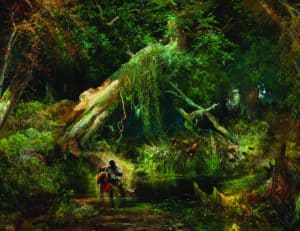
Thomas Moran, Slave Hunt, Dismal Swamp, Virginia, 1862, oil on canvas.
The Dismal Swamp was a known route and destination for freedom seekers. This route was the most rugged and treacherous route where insects, snakes, and wild animals were abundant. It was to this inhospitable place many runaways came.
While some runaways were able to blend in with free blacks, many chose to seek refuge among a colony of runaways (called maroons) in the Great Dismal Swamp. The nature of the swamp made it possible for large colonies to establish permanent refuge. It was difficult to capture a freedom seeker once they reached the swamp, although occasional trips were made to recapture runaways with specially trained dogs. Colonies were established on high ground in the swamp, where crude huts were constructed. Abundant animal life provided food and clothing. Some earned money by working for free black shingle makers, who hired maroons to cut logs.
The work of digging the canal began in 1793, mostly by enslaved people who were rented out to the project by local land owners. It took 12 years of backbreaking work under highly unfavorable conditions to complete the 22- mile long waterway. In addition to the grueling work, laborers also endured the mosquito and wildlife infested environment. African Americans made up thirty percent of the waterman in Camden County in the 1790s and were common sights on local waterways. Opening to navigation in 1805, the Dismal Swamp Canal connected and allowed trade between the Chesapeake Bay in Virginia and the Albemarle Sound in North Carolina. Today, the canal is the oldest operating man-made canal in the country and is managed by the U.S. Army Corps of Engineers. It is also a recognized as a National Civil Engineering Landmark as well as a designated site on the National Underground Railroad Network to Freedom and African American Experience of Northeast NC.
Learn more about the National Park Service Underground Railroad Network to Freedom through the following brochures and visiting:
https://www.nps.gov/subjects/ugrr/index.htm
National Underground Railroad Network to Freedom
Network To Freedom: The Underground Railroad Bulletin
Network To Freedom (Rack Card)
NCBLACKHERITAGETOUR.COM: Take a powerful and inspiring road trip and explore the sites and stories that celebrate the contributions of African Americans and their significance in the cultural heritage of northeast North Carolina. This self-guided, digital heritage trail includes more than 20 outdoor interpretive signs and monuments, parks, waterways and museums. Check out all of the sites featured, download county itineraries and plan your trip at African American Experience of Northeast North Carolina
Moses Grandy
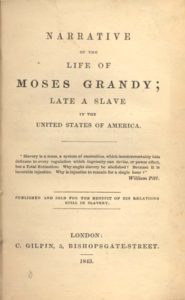
Moses Grandy was born into slavery in Camden County in 1786 and as a youth became interested in maritime occupations. As a result of his skills as a river ferryman, canal boatman, schooner deck man, and lighter captain, he became known as Captain Grandy. William Grandy, a prominent slave owner in Camden County was Moses’s first slave master. Moses was hired out to Enoch Sawyer and George Furley to tend ferry along the Pasquotank River and haul lumber in the Dismal Swamp.
A successful waterman, Moses attempted to purchase his freedom three times, but twice was cheated out of his earnings and release. Finally in 1827, Captain Edward Minner, purchased Moses and allowed him to live as a free man. Grandy repaid Captain Minner and eventually settled in Boston, where he did a variety of jobs, but was soon at sea again.
Title Page Image- North Carolina Collection, Wilson Special Collections Library, UNC-Chapel Hill.
In 1842 Moses sailed to London and met with abolitionist George Thompson, who penned Grandy’s life story. Proceeds from, Narrative of the Life of Moses Grandy; Late a Slave in the United States were used to help liberate Grandy’s enslaved relatives. Grandy’s story and other slave narratives were used by anti-slavery movements in the United States and Britain to demonstrate the cruelty of slavery. Grandy recounted his story throughout his travels and addressed the World’s Anti-Slavery Convention in London on June 17, 1843.
Dismal Swamp in Literature.
Many authors and historians have written about the swamp’s role as a hiding place for freedom seekers and fugitives. It has been used as a backdrop in Harriet Beecher Stowe’s novel, Dred: A Tale of the Great Dismal Swamp, and Henry Wadsworth Longfellow’s poem, “The Slave in the Dismal Swamp”. Recent archaeological work by Dr. Daniel Sayers, anthropology professor at American University, uncovered several maroon communities located within the Great Dismal Swamp in the late 18th and early 19th centuries. Dr. Sayers book, A Desolate Place for a Defiant People: The Archaeology of Maroons, Indigenous Americans, and Enslaved Laborers in the Great Dismal Swamp, examines the complex social and economic systems developed by these communities inhabiting the swamp.

